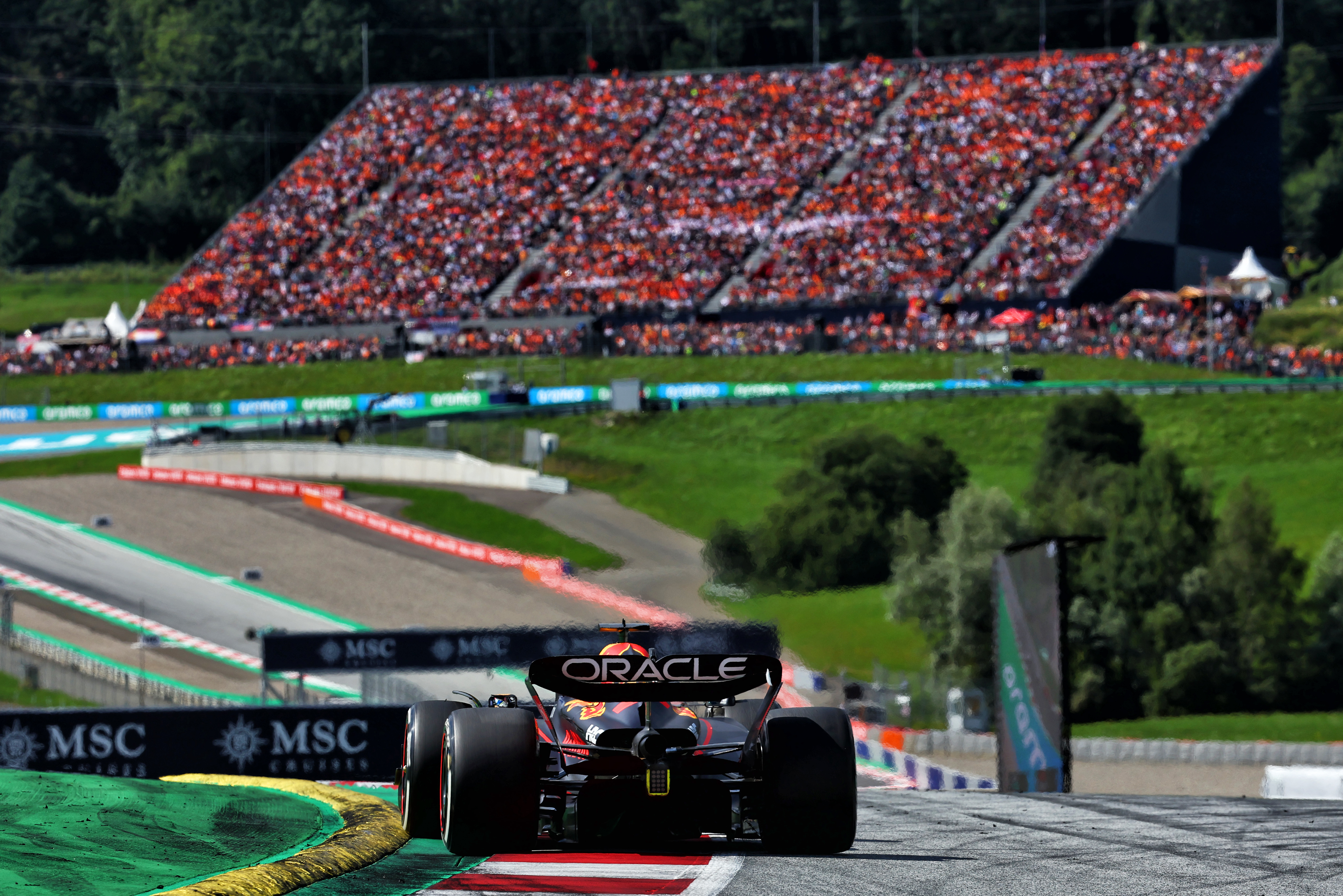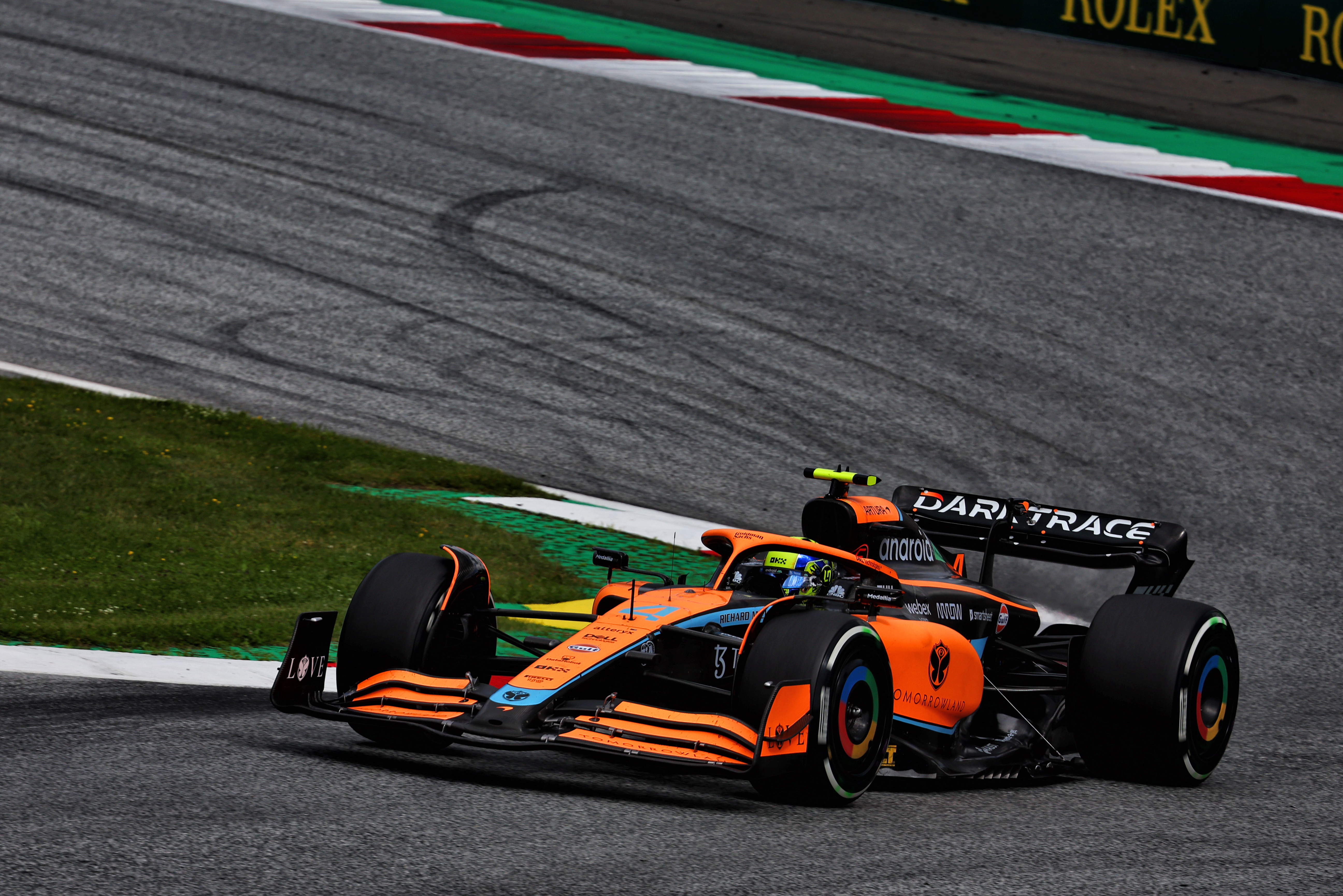Red Bull Formula 1 driver Max Verstappen says the onslaught of track limits warnings and penalties during the Austrian Grand Prix “just didn’t look good for the sport”.
Verstappen, race winner Charles Leclerc and his team-mate Carlos Sainz were among the many drivers to have track limits abuses recorded – for a combined total of 43 – and there were five-second penalties for the likes of Lando Norris, Pierre Gasly and Sebastian Vettel.
And when prompted after the race to talk about the heated Friday drivers’ meeting – which left Sebastian Vettel with a suspended fine – in which race control and stewarding approaches were discussed, Verstappen brought up unprompted the topic of track limits.
F1 is operating under a stricter track limits guideline this year, with any four-wheel breach of the white line denoting the limits of the track seen as an infringement – whereas last year t was determined by special instructions applying to certain corners.
Asked whether he agreed with Grand Prix Drivers Association director George Russell that having two rotating race directors in Eduardo Freitas and Niels Wittich was an issue for consistency, Verstappen said: “I think it’s just more about working with the drivers instead of just keeping your stance and being stubborn. We want to make it better for everyone, and it’s not like we are fighting for ourselves.
“We have good conversations between drivers, and at the end of the day I think more or less on most things we agree – of course everyone has their own opinions about certain things.
“But, like, track limits… I think track limits debate this weekend has been a bit of a joke, not only in F1 but in F2, and F3.”
A track limits penalty effectively decided the winner of Sunday’s Formula 2 race – with ex-F1 driver Roberto Merhi’s five-second penalty denying him what would’ve been a win inherited as a result of other, unrelated penalties.
“It’s easy to say from the outside, ‘yeah, you have to just stay within the white lines’ – yeah, I mean, it sounds very easy but it’s not,” Verstappen continued.
“’Cause when you go that quick through a corner and some of them are a bit blind, if you have a bit more understeer, tyres are wearing, it’s easy to just go over the white line, but do you actually gain time? Maybe yes, maybe not. And… to be honest it’s only like two-three corners where you can really just go a bit wider.

“And, yeah, I don’t think we should have this ‘ah, you went one millimetre over, that’s a penalty or whatever’. Then just add a wall or put some gravel back. Like Turn 6, on the exit, I think that’s great, because there is gravel, you punish yourself if you go wide.
“These are things we have to look into, how we can make it better, because also for the stewards and just the people involved with checking these track limits – I mean it’s almost impossible to check these kinds of things, because you need almost like one guy on one car the whole race, to check the whole lap, if he’s going outside on the white line. On this track at least. In some places, you get naturally penalised if you just go a bit wide and you touch the gravel.
Verstappen’s point on verifying track limits abuses is salient on a weekend in which his team-mate Sergio Perez was thrown out of Q3 retroactively over track limits – albeit in his case the offence was on the inside of a corner, a slam-dunk infringement and unrelated to the new policing approach.
“These kinds of things, I think it just doesn’t look good, for the sport as well,” Verstappen concluded.
“And that’s just one thing. The other thing is with racing incidents and stuff. For sure we can do better, I think we’ll work on it and try to make it better.”

Norris, who finished seventh, felt his penalty cost him a chance to scrap with Haas driver Mick Schumacher for sixth place.
He made it clear he didn’t necessarily feel hard done by – but pointed out that at the speeds F1 cars were going the white lines were hard to discern through some corners.
He also said: “I mean, it’s the same for everyone if I think of it that way. The annoying one- the last two corners, I completely understand, you run wide there- it’s also so difficult to judge at the speeds we’re doing, but there you run wide, you pretty much gain an advantage.
“Whereas I had one at Turn 1, where I just locked up the front tyre, I hit the sausage [kerb], I lost like a second up to the hill [to Turn 3]. And then I got track limits [infringement] for that. I’ve been punished enough because I’ve lost one second.
“It’s a bit stupid, some of them, and it’s life, and it’s the same for everyone, and we wanted consistency and so on – it’s just frustrating when you’re in the car. The worst one is Turn 6 – say the car is two metres wide, from the white line to the gravel you’ve got like two metres and five centimetres. You get punished if you go to the gravel, that should be a limit. But if you go those five centimetres over to the gravel, that’s track limits – that’s just a silly one.”
On the matter of track limits, F1’s governing body FIA stressed that the monitoring “has been consistent with all previous events this year”.
“At each circuit, the white line is used as the defined limit of the track, and this has been implemented following discussions with the drivers and teams to improve consistency and clarity for the competitors and fans.
“The number of penalties today is proportional to the number of infringements of Article 33.3 of the Sporting Regulations, with drivers during the race given two ‘strikes’ for crossing the white line with all four wheels, followed by a black-and-white flag for the third infringement, and referral to the stewards for each subsequent infringement.”



